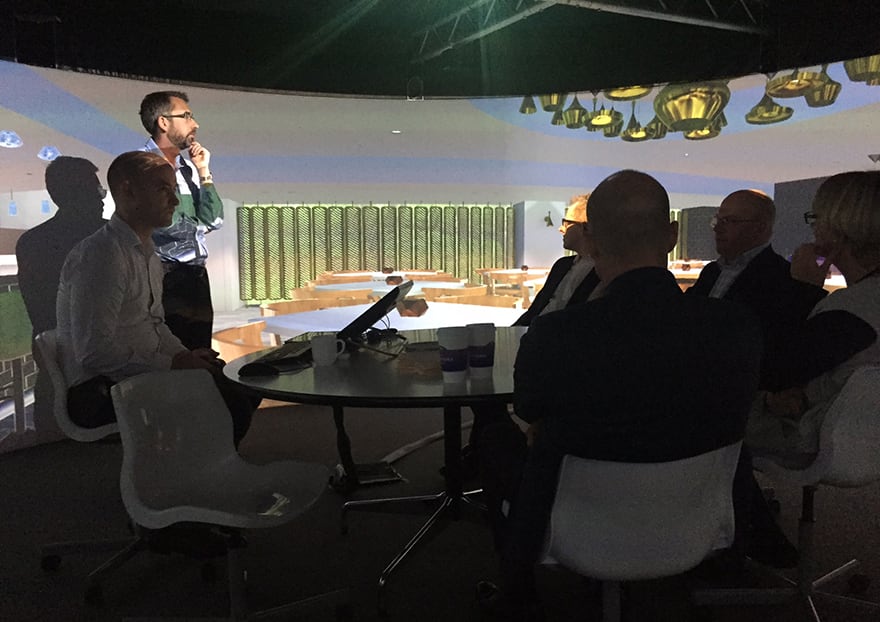Engineer Elliott Wood installed a 360-degree visualisation cylinder from Igloo in its London office to investigate how VR can be integrated into the business. Steve Faulkner, associate director, tells BIM+ what they discovered.
Why did Elliott Wood decide to trial the Igloo?
We have been using Revit as a BIM tool for almost 10 years and actually looked at Igloo cylinders about two years ago, but at the time we felt that client engagement with BIM was limited and therefore invested in the more affordable Oculus Rift headsets to interrogate models. However, over the past six months, probably prompted by the Level 2 mandate in April, we have seen far more engagement towards BIM from our clients.
Traditional model reviewing tools do not encourage exploration of space, form or aesthetics, the human elements of a project, so when we were given the opportunity to house a 6m diameter 360-degree Igloo cylinder in the office, we saw this as a massive opportunity to show some of our clients (particularly those with interests in commercial properties), how BIM and particularly VR could help them to understand and fully engage themselves with their projects.
What is business case for architects and engineers in using virtual reality and visualization cylinders?
We had the Igloo in the office for a total of three days, with 18 scheduled client sessions with additional drop-in sessions in the evenings. The fact that the majority of the sessions were filled the day after the invitations were sent out tells us that our clients are looking for ways to engage with BIM.
To demonstrate the power of VR and the cylinder in particular, we utilised a script that has been developed by B+R Architects to transfer the design team’s Revit files for a Derwent London scheme that is currently on site, into the Unity gaming engine. Clients were then able to navigate around the perimeter of the building and also inside it using an Xbox games console controller – fully immersing themselves in the design.

We purposely used an out-of-date MEP model during the demonstration, so that we could highlight clashes and errors in the design (because the architects and structural models had been progressed). This worked extremely well and our clients saw enormous benefits in utilising VR to really explore, navigate and understand a building during the design phase of a project and take an element of control from the entire process.
What needs to happen for Igloos (or similar) to become commonplace in the offices of architects, engineers and contractors?
To get the maximum benefit of an Igloo cylinder, the minimum diameter is around 6m, which may make having one in-situ unviable to a lot of businesses. Indeed, our London office is fairly large and open plan, but as the Igloo only fitted in one location we had to move seven engineering desks, our waiting area and reception desk just to host the event! However, to quote one of our clients: “Surely the cylinder is more valuable than your reception?”
What is the business case for a company like Elliott Wood to get their own Igloo?
With BIM reaching a level of maturity and VR entering the mainstream of society more and more clients and designers are requesting VR outputs for projects. Following the success of this event, we are looking at the business case of having an Igloo in our office. Yes it takes space, but the Igloo can also double up as a permanent meeting room in our offices and the ROI is not difficult to justify.
So, are you intending to install an Igloo cylinder in the office?
Elliott Wood is exploring options of how we can accommodate one in our central London office so that we can host design workshops within a VR environment.
We had the Igloo in the office for three days, with 18 scheduled client sessions with additional drop-in sessions. The fact that the majority of the sessions were filled the day after the invitations were sent out tells us that our clients are looking for ways to engage with BIM.– Steve Faulkner, Elliott Wood















